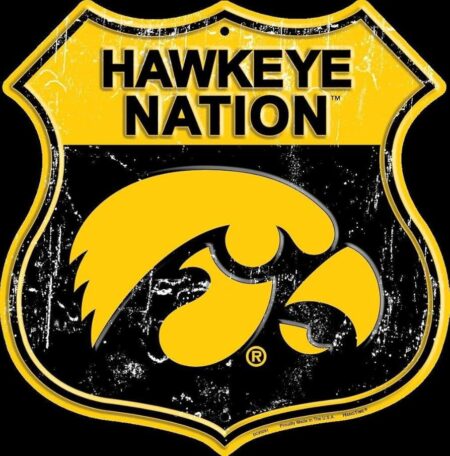The Oakland Athletics’ long-anticipated Las Vegas ballpark development agreement is poised for a potential vote this October, marking a significant milestone in the team’s relocation plans. The proposal, which outlines the terms for constructing a new state-of-the-art stadium on the Las Vegas Strip, has drawn considerable attention from city officials, business leaders, and fans eager to see Major League Baseball expand its presence in Nevada. As stakeholders prepare to weigh in on the agreement, the upcoming vote could pave the way for the Athletics’ next chapter in one of the country’s most dynamic sports markets.
A’s Las Vegas Ballpark Development Agreement Faces Critical October Vote
The ongoing negotiations surrounding the development of the A’s new Las Vegas ballpark have reached a pivotal moment, as city officials prepare for a crucial vote this October. This decision could shape the future of the franchise’s relocation plans and significantly impact the Las Vegas community and economy. Key stakeholders are closely monitoring discussions over public funding, land acquisition, and infrastructure improvements required to bring the project to life.
Supporters emphasize the potential benefits of the stadium, citing increased job opportunities and tourism revenue. Conversely, opponents raise concerns about the financial implications and long-term commitments tied to the deal. Below are some of the critical elements expected to influence the October vote:
- Estimated Project Cost: $1.5 billion
- Proposed Location: Downtown Las Vegas
- Public Funding Requested: $380 million
- Projected Job Creation: Over 3,000 permanent and temporary positions
- Expected Completion Date: 2028
| Stakeholder | Position | Primary Concern |
|---|---|---|
| City Council | Mixed | Budget allocation and urban impact |
| Local Businesses | Supportive | Economic growth and foot traffic |
| Taxpayer Advocacy Groups | Opposed | Use of public funds |
Key Financial and Community Impacts of Proposed Ballpark Project
The proposed ballpark project is poised to inject significant economic vitality into the Las Vegas community. Projections estimate the creation of over 3,000 construction jobs during the development phase, followed by nearly 1,200 permanent roles once the stadium is operational. Local businesses stand to benefit from increased foot traffic and tourism, with anticipated annual visitor spending exceeding $150 million. City officials underscore the potential for a ripple effect, boosting sectors such as hospitality, retail, and entertainment.
From a financial perspective, the funding framework blends public and private investment while aiming to minimize taxpayer risks. The agreement outlines that 70% of development costs will be privately financed, with public funds sourced through targeted tourism-related revenue streams. Below is a snapshot comparing key financial and community metrics:
| Impact Category | Estimated Value | Notes |
|---|---|---|
| Construction Jobs | 3,200+ | Local hiring emphasis |
| Annual Visitor Spending | $150M+ | Includes tourism & events |
| Private Investment | 70% | Majority of project costs |
| Permanent Jobs | 1,200+ | Operations and stadium staff |
- Revenue Impact: Expected boost in tax revenues without raising existing rates.
- Community Programs: Commitment to local youth and sports initiatives included.
- Infrastructure Upgrades: Planned improvements to roads and public transit surrounding the venue.
Stakeholder Reactions and Controversies Surrounding the Deal
Reactions to the proposed ballpark deal have been sharply divided among key stakeholders, highlighting a complex interplay of optimism and skepticism. Supporters, including city officials and local business leaders, emphasize the project’s potential to stimulate economic growth, create jobs, and revitalize the surrounding downtown area. “This deal positions Las Vegas as a major sports and entertainment destination for years to come,” noted one city council member. Meanwhile, some community groups and environmental advocates have raised concerns about the deal’s long-term impact, particularly regarding displacement risks for nearby residents and unresolved traffic congestion issues.
Financial analysts and taxpayers are also expressing wariness about the deal’s funding mechanisms. The proposed agreement relies heavily on public financing, drawing criticism from watchdog organizations wary of potential budget overruns and unclear economic benefits. The table below outlines key points raised by various stakeholder groups:
| Stakeholder Group | Primary Concern | Reported Position |
|---|---|---|
| City Officials | Economic growth & job creation | Strongly supportive |
| Environmental Advocates | Displacement & environmental impact | Opposed or cautious |
| Local Businesses | Increased tourism & sales | Generally supportive |
| Taxpayer Watchdogs | Use of public funds | Critical and skeptical |
- Community forums are being scheduled ahead of the October vote to address concerns and gather further public input.
- Legal challenges remain a possibility as opponents are organizing to contest the agreement’s terms.
- Negotiations continue with MLB representatives to finalize financial and operational details.
Recommendations for Ensuring Transparent and Inclusive Decision-Making
To foster trust and accountability in the decision-making process surrounding the ballpark development agreement, it is essential that city officials prioritize clear communication and open channels for public feedback. Regular town hall meetings, detailed online updates, and accessible documentation of negotiation progress can empower residents to stay informed and voice their concerns. Incorporating diverse stakeholder perspectives-including neighborhood associations, local businesses, and advocacy groups-ensures that decisions reflect community interests rather than narrow political or financial agendas.
Key strategies to enhance transparency and inclusivity include:
- Publishing comprehensive impact assessments and fiscal analyses prior to votes
- Hosting moderated forums that allow for equitable citizen engagement
- Utilizing digital platforms for real-time question submissions and feedback
- Establishing independent oversight committees to review contract terms and project milestones
| Stakeholder Group | Recommended Involvement | Engagement Method |
|---|---|---|
| Local Residents | Inform & Provide Feedback | Public Forums & Surveys |
| Businesses | Consult on Economic Impact | Workshops & Roundtables |
| City Officials | Lead Transparent Negotiations | Regular Updates & Open Meetings |
| Community Advocates | Represent Equity Concerns | Advisory Panels & Reports |
The Conclusion
As the October vote approaches, all eyes will be on the Las Vegas community and stakeholders to see whether the proposed development agreement for the A’s new ballpark will move forward. The decision stands to significantly impact the city’s sports landscape and economic future, marking a pivotal moment in Las Vegas’s ongoing efforts to position itself as a major league sports destination. Further updates will follow as the vote draws near.





